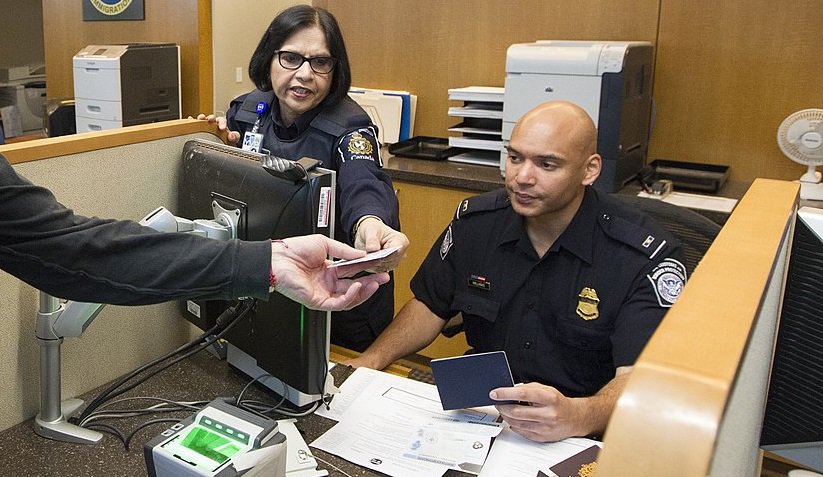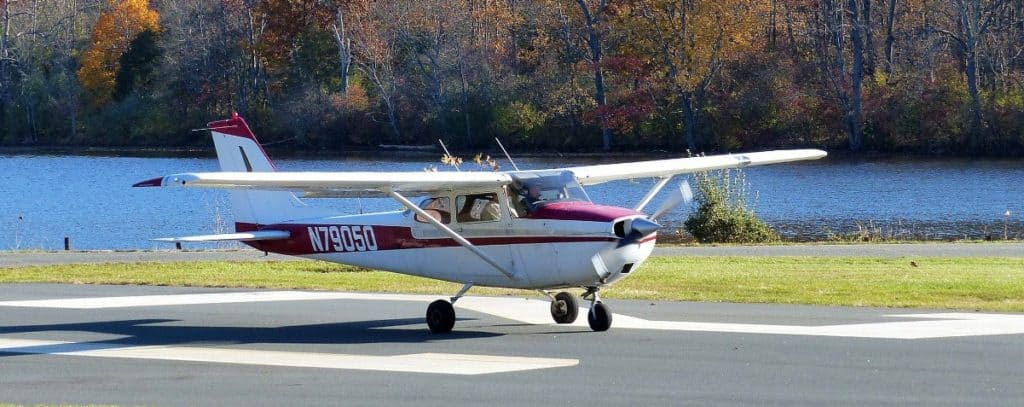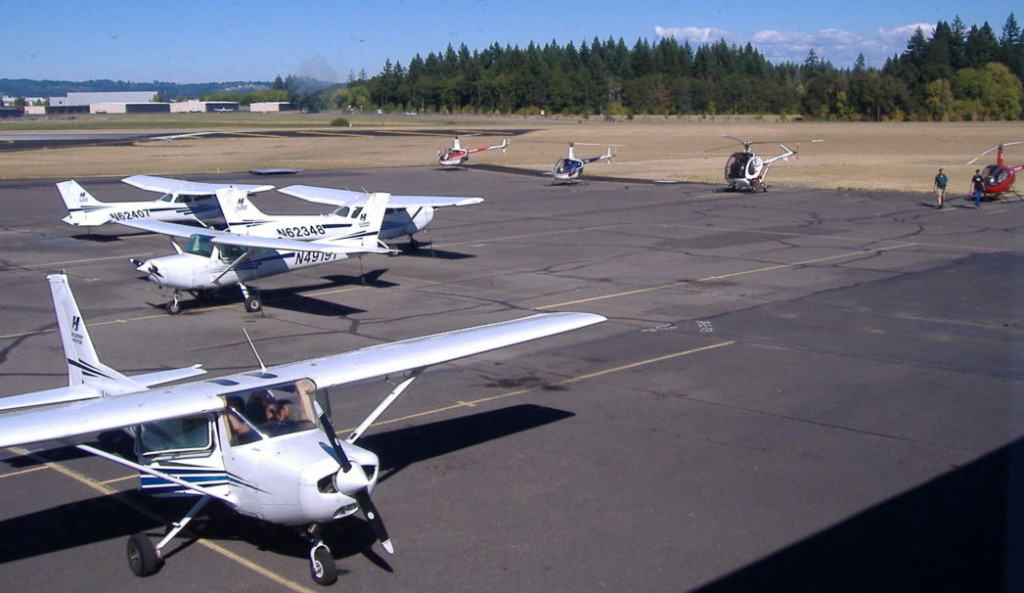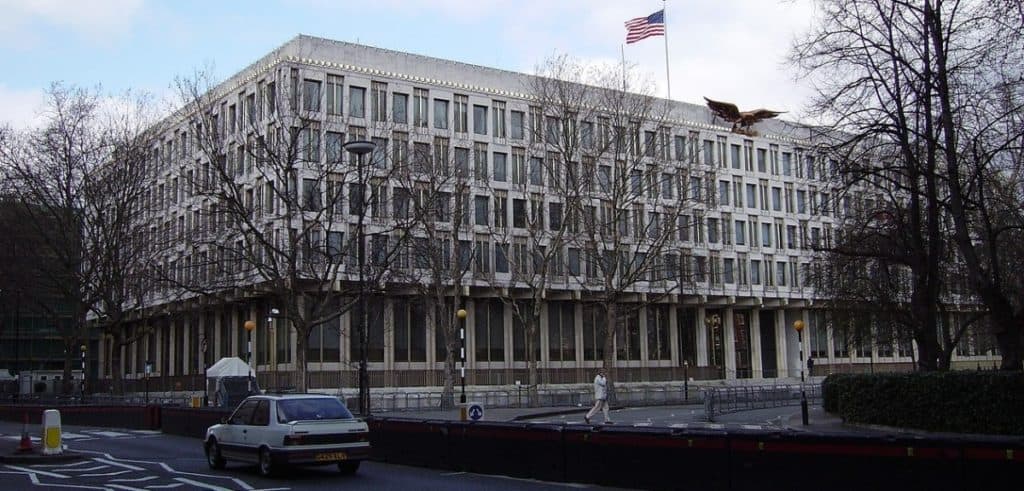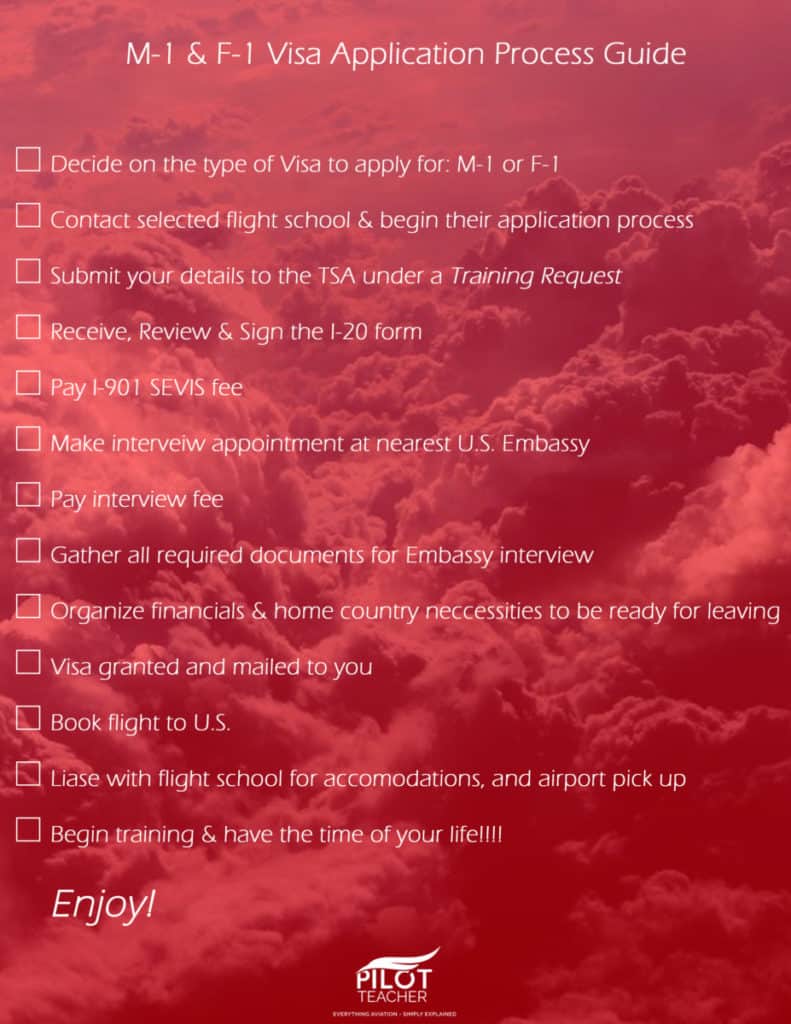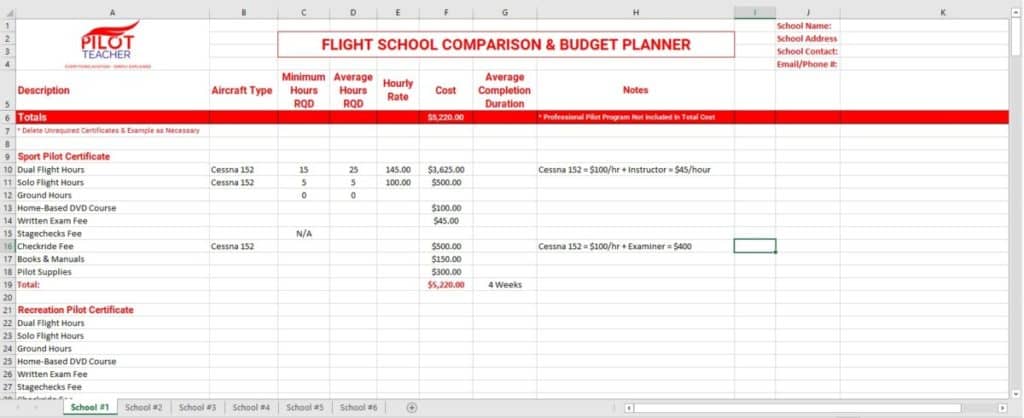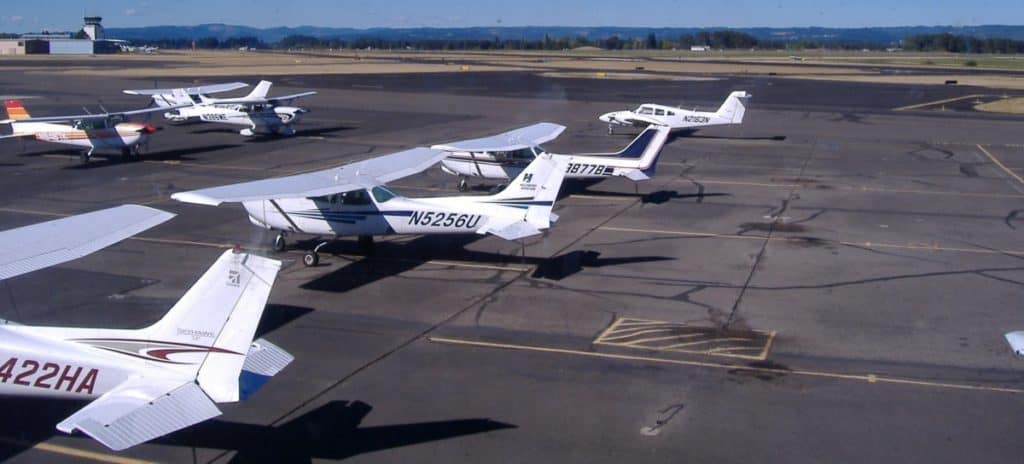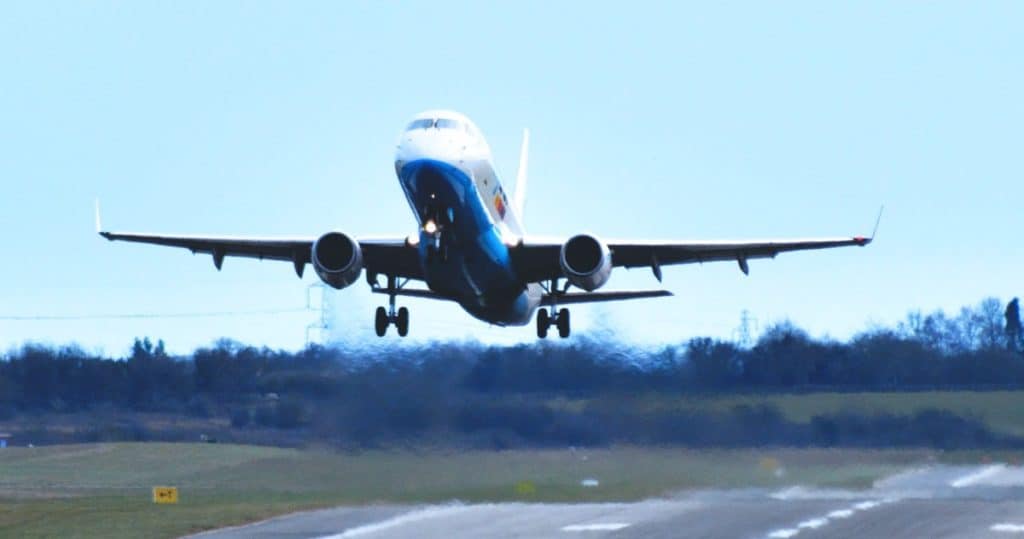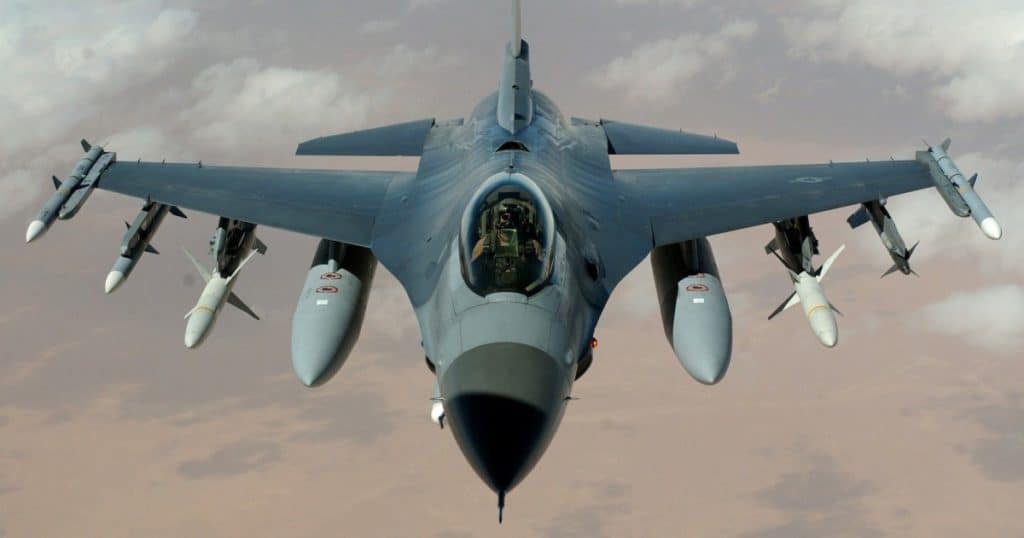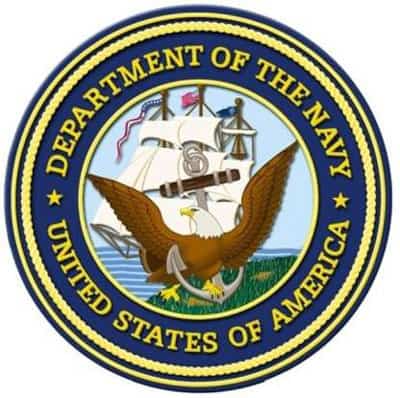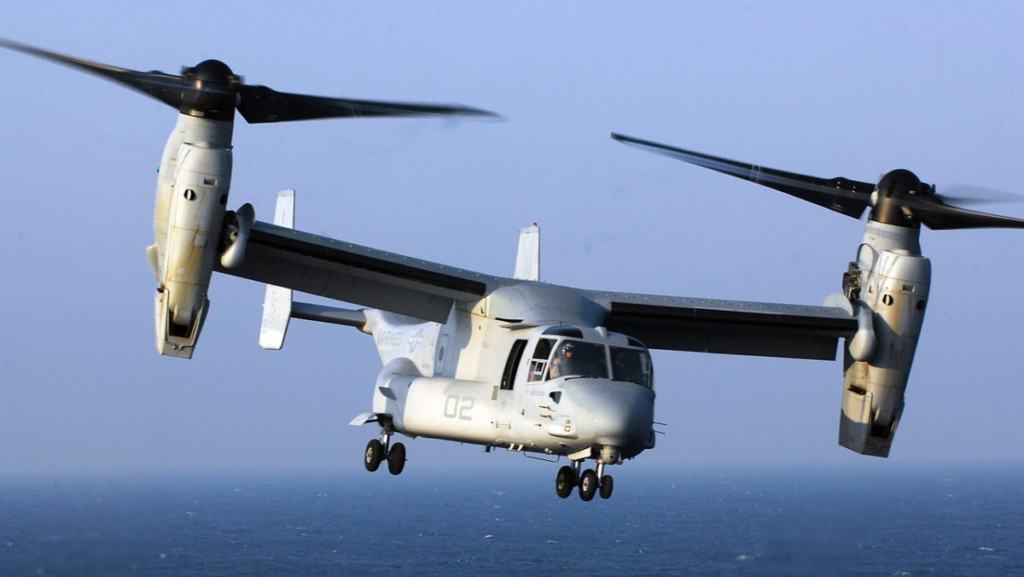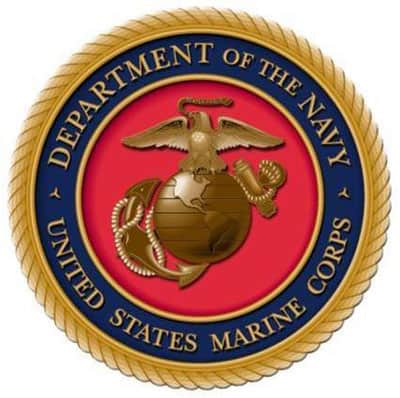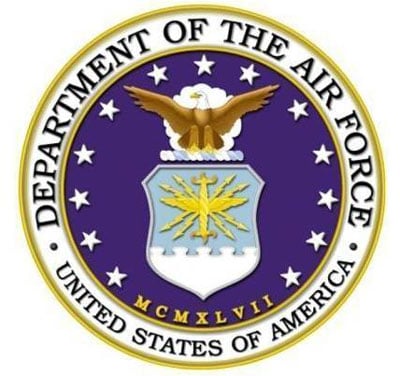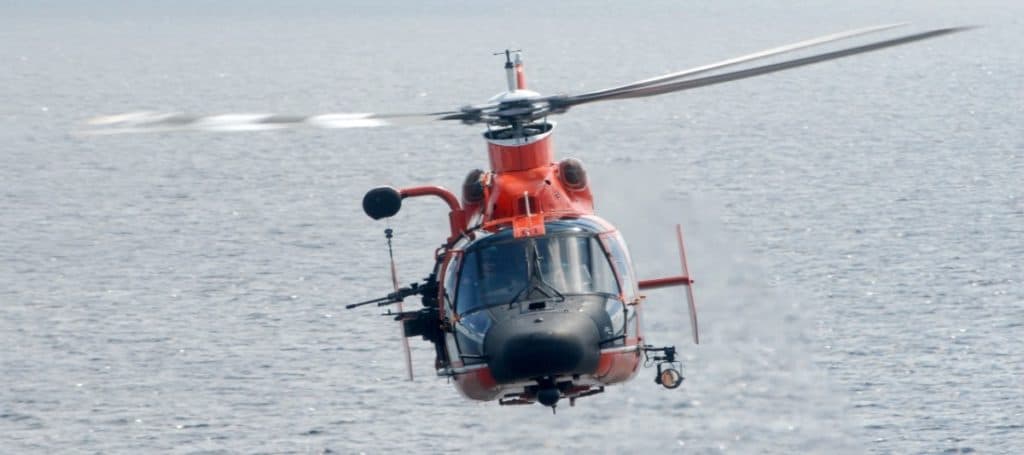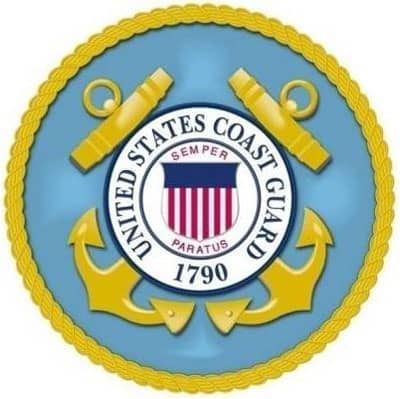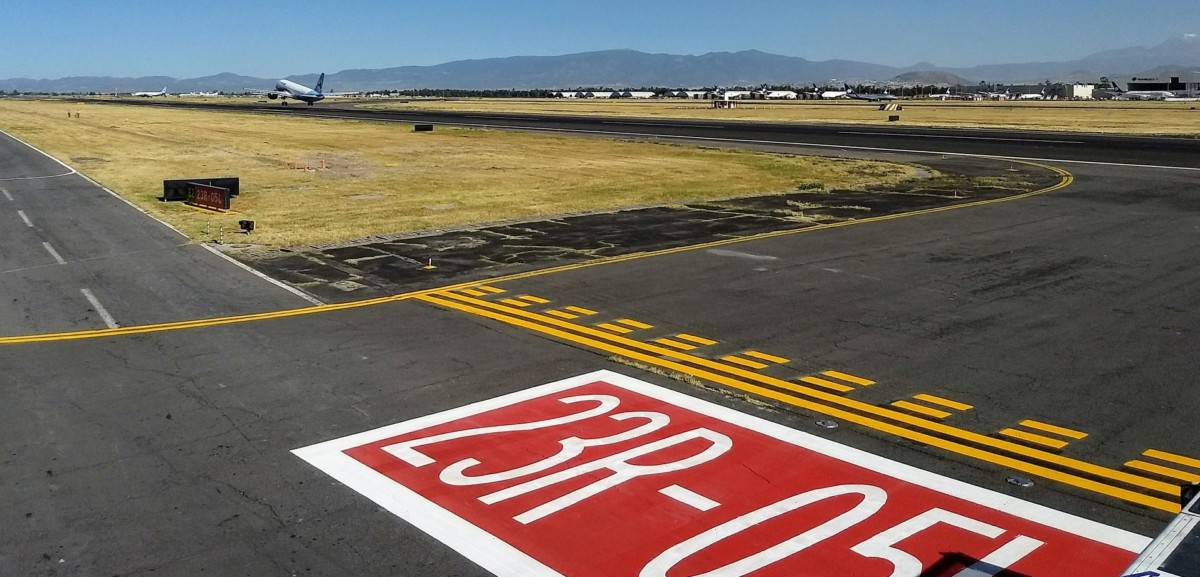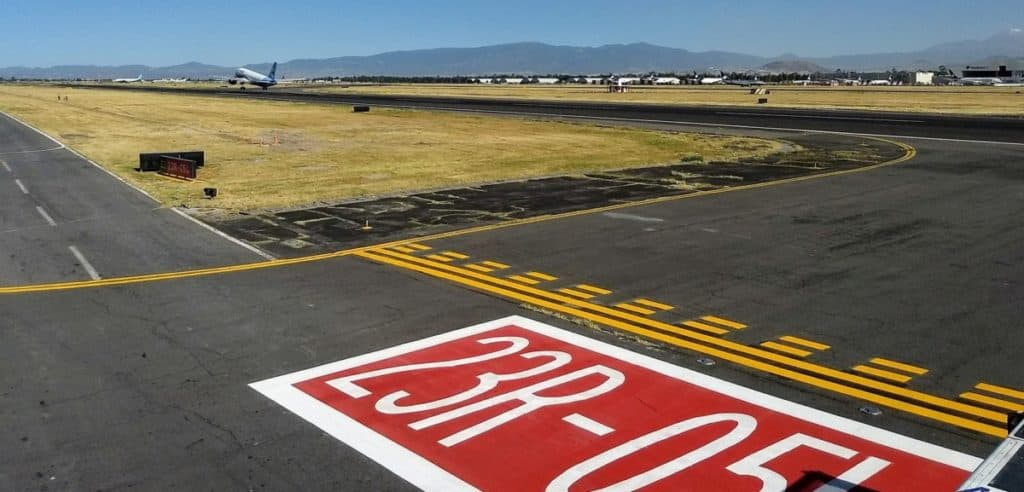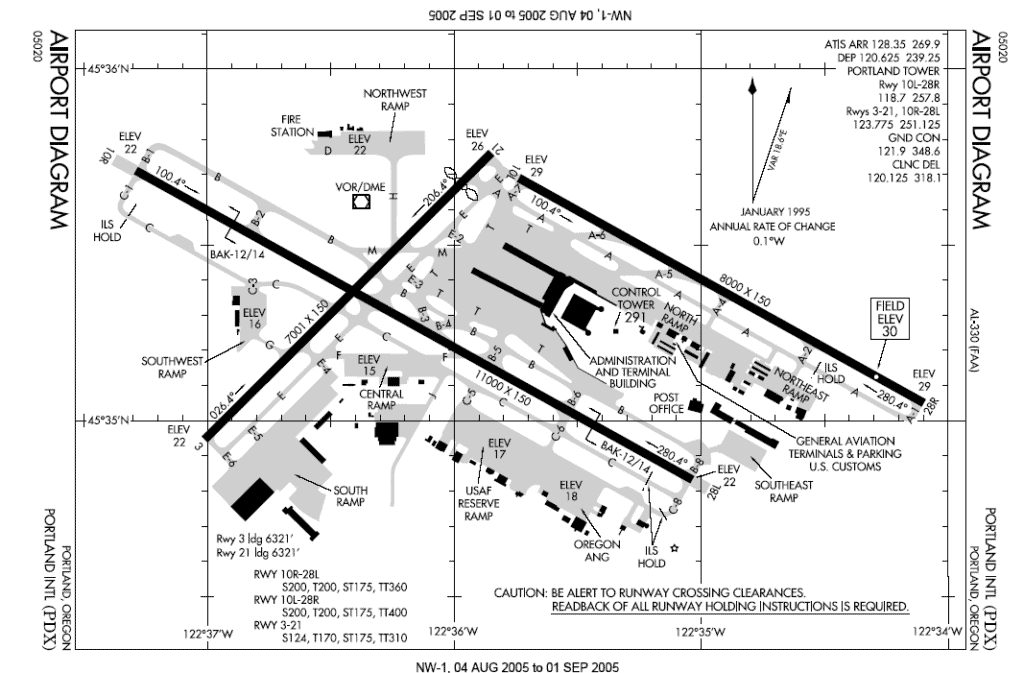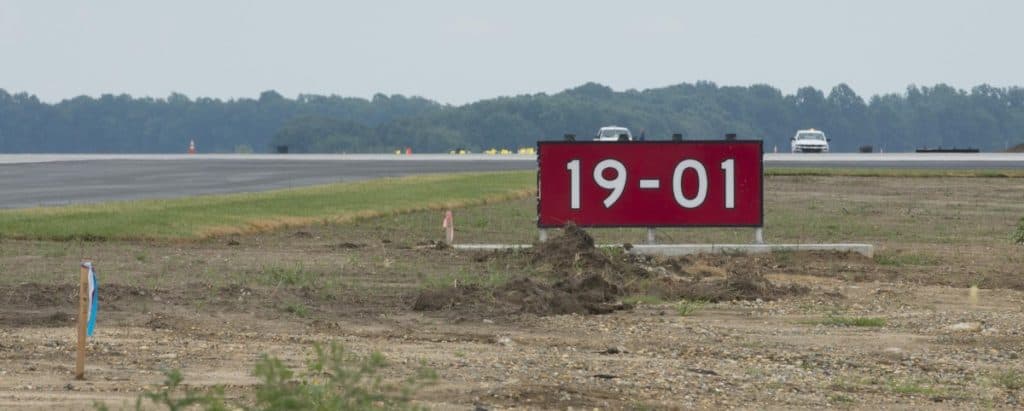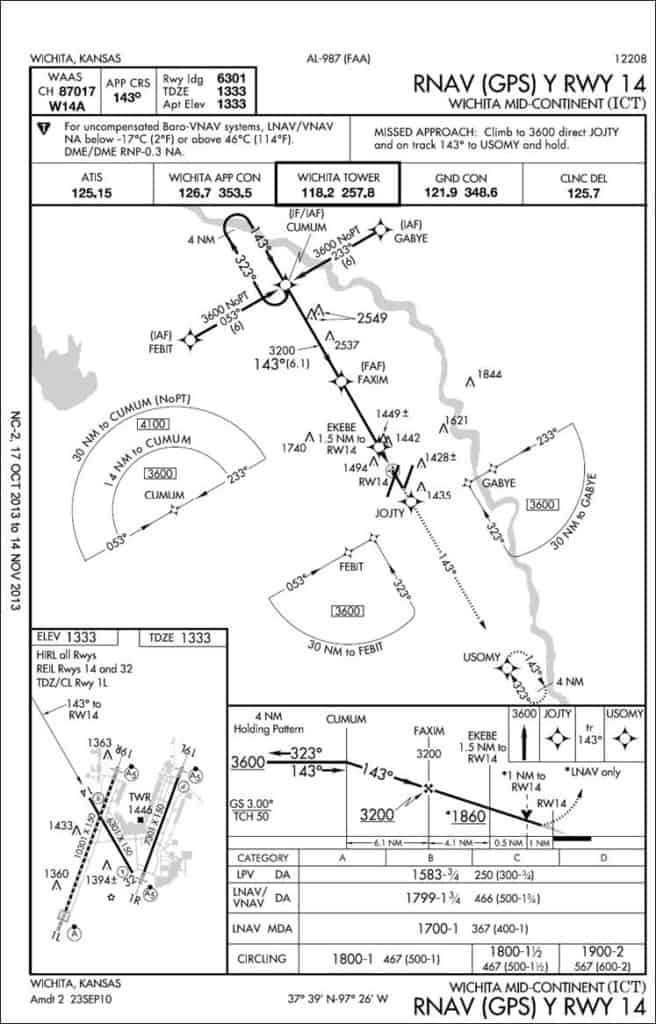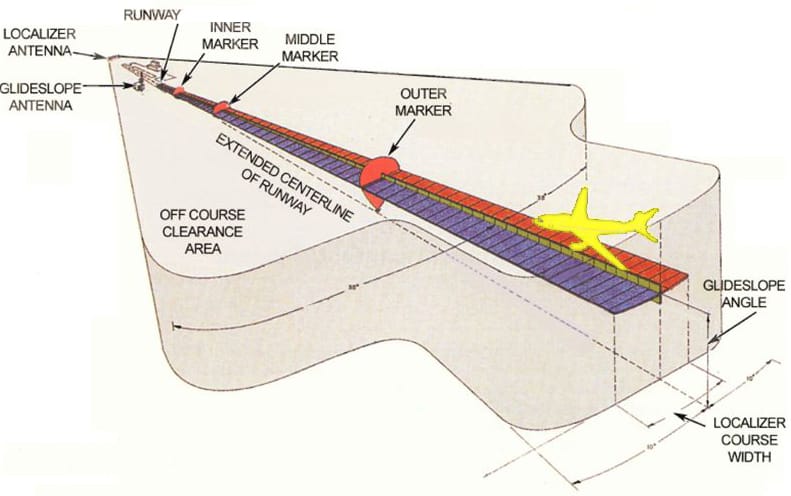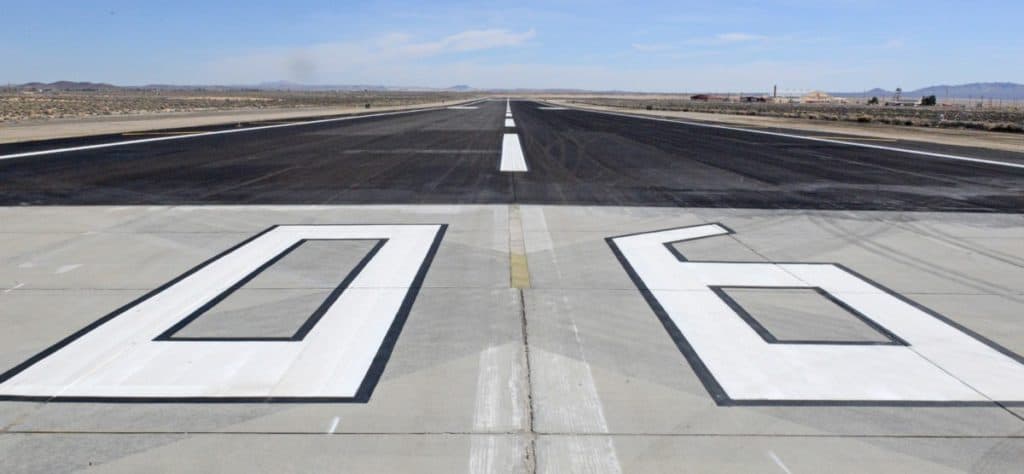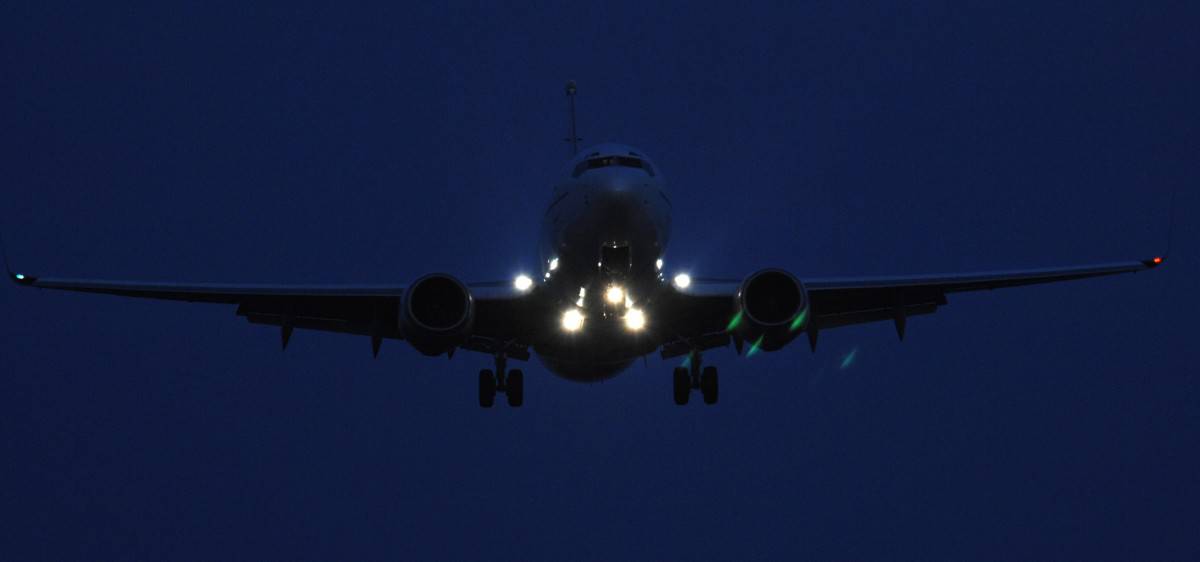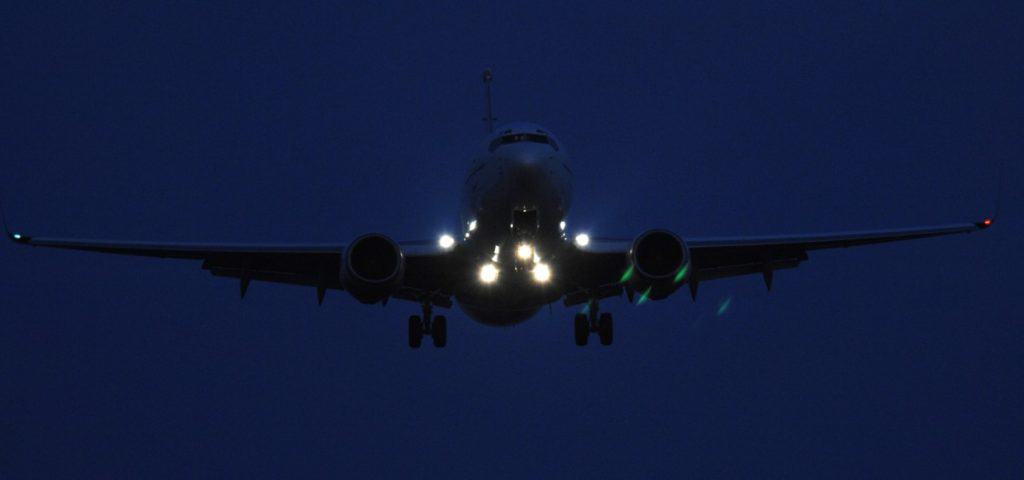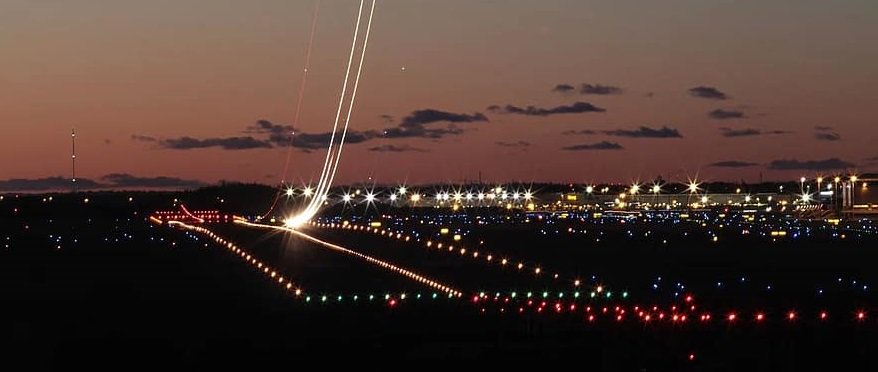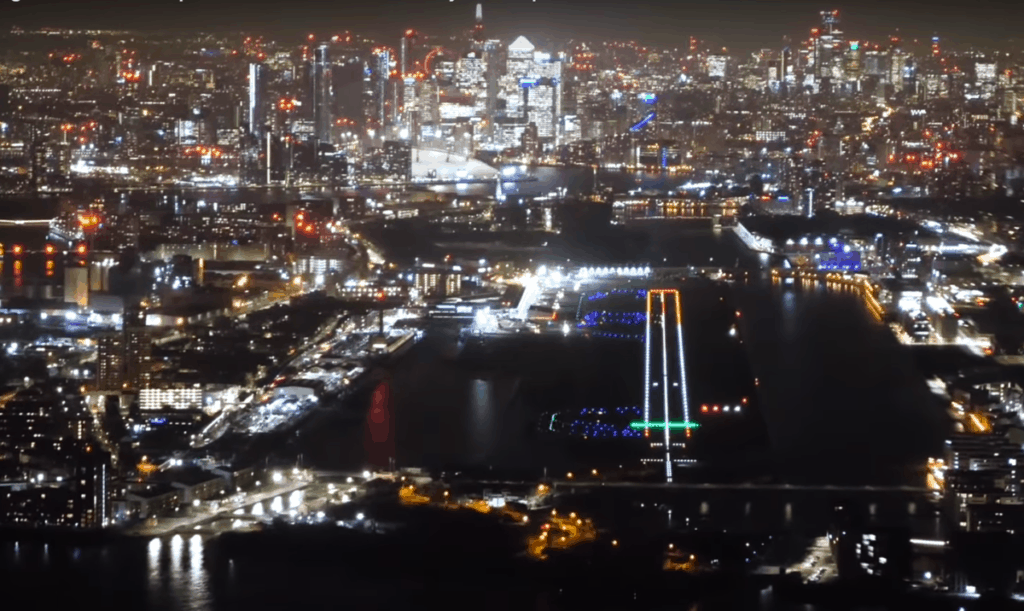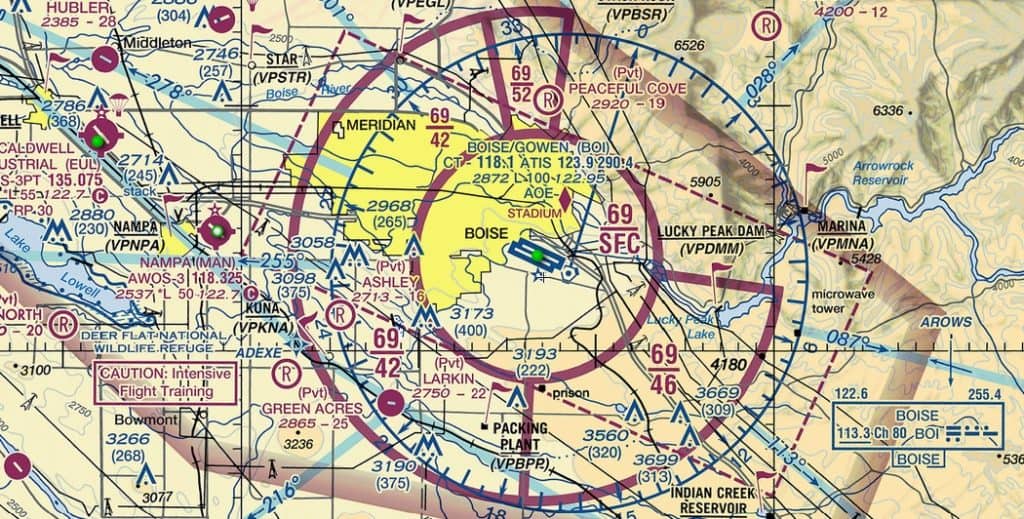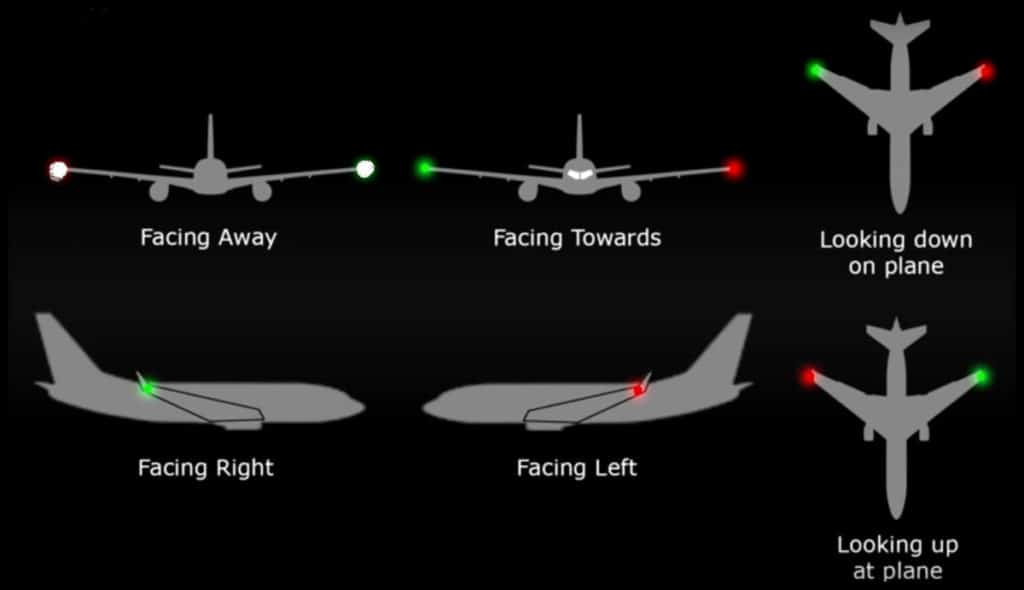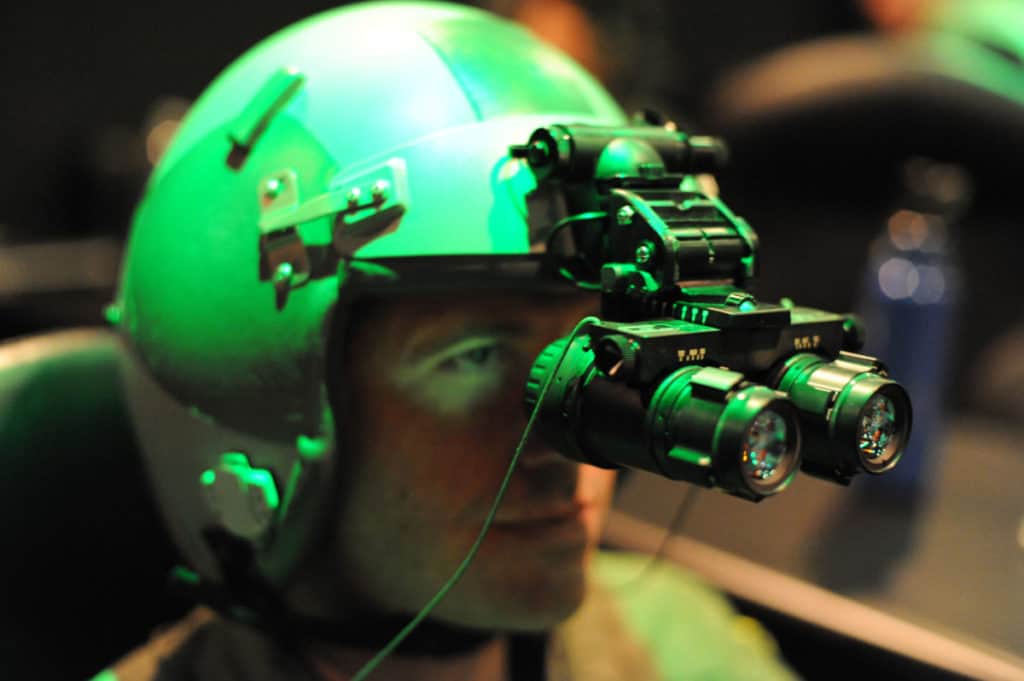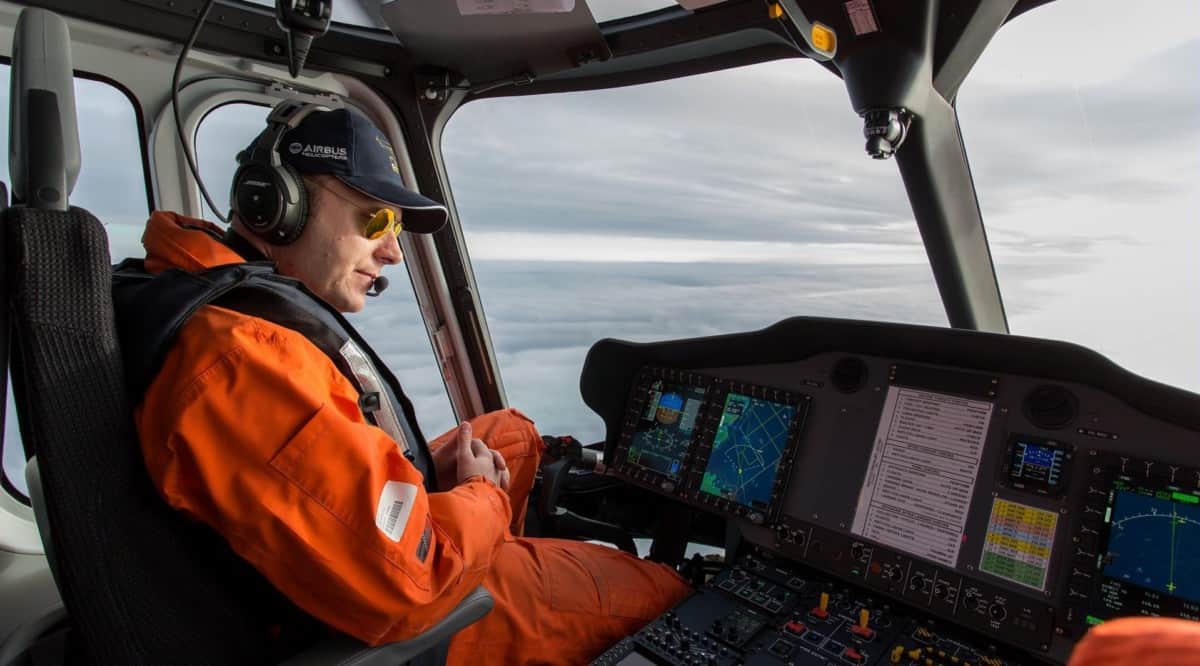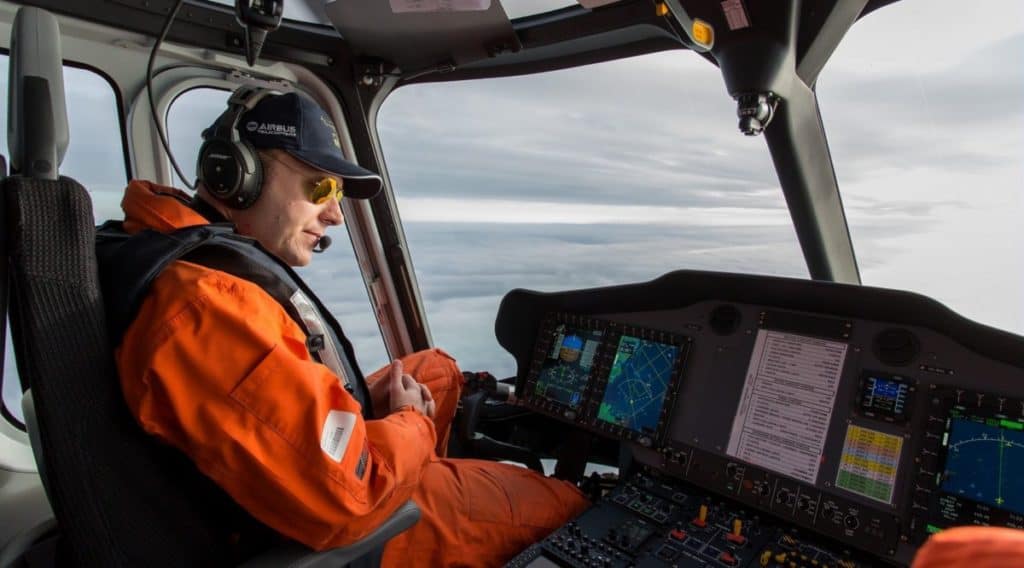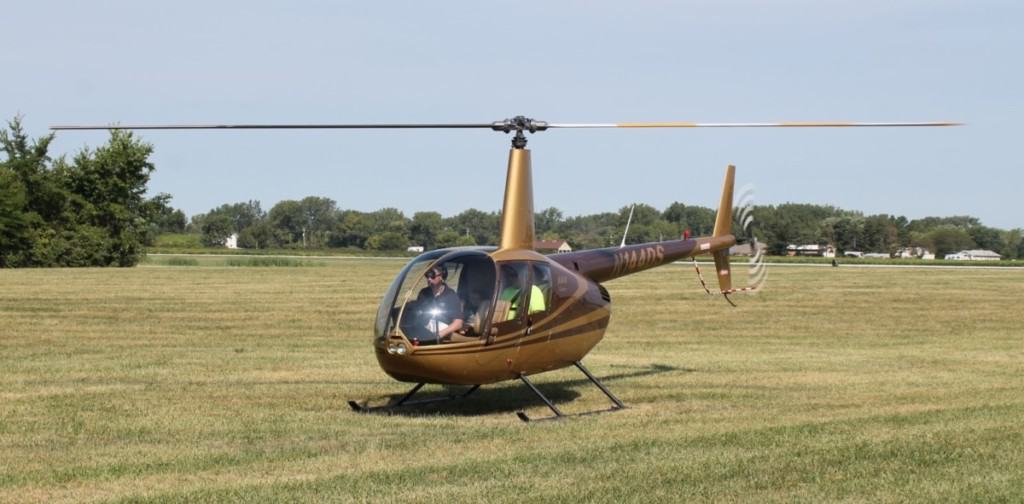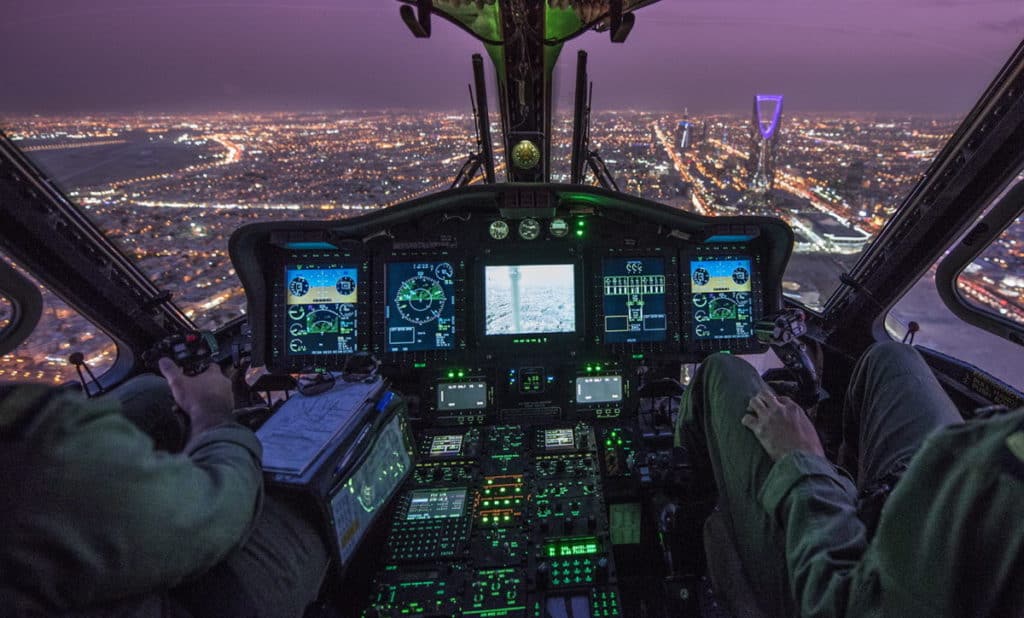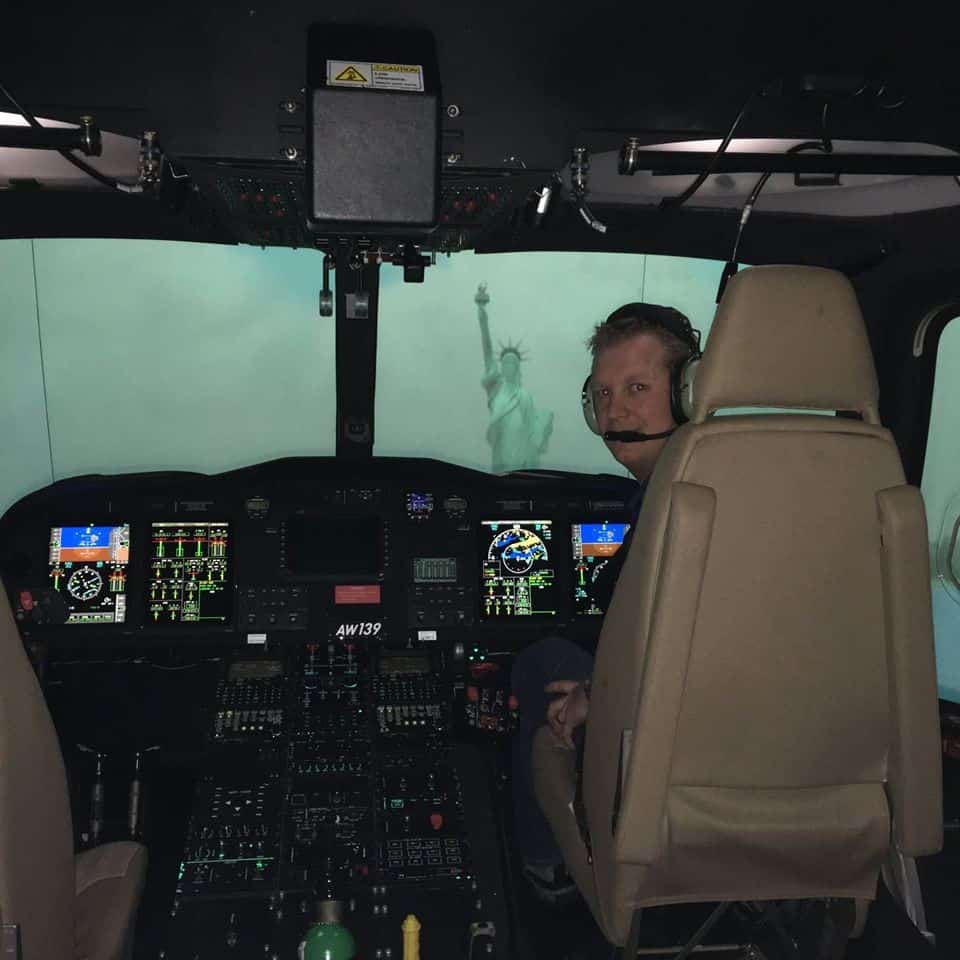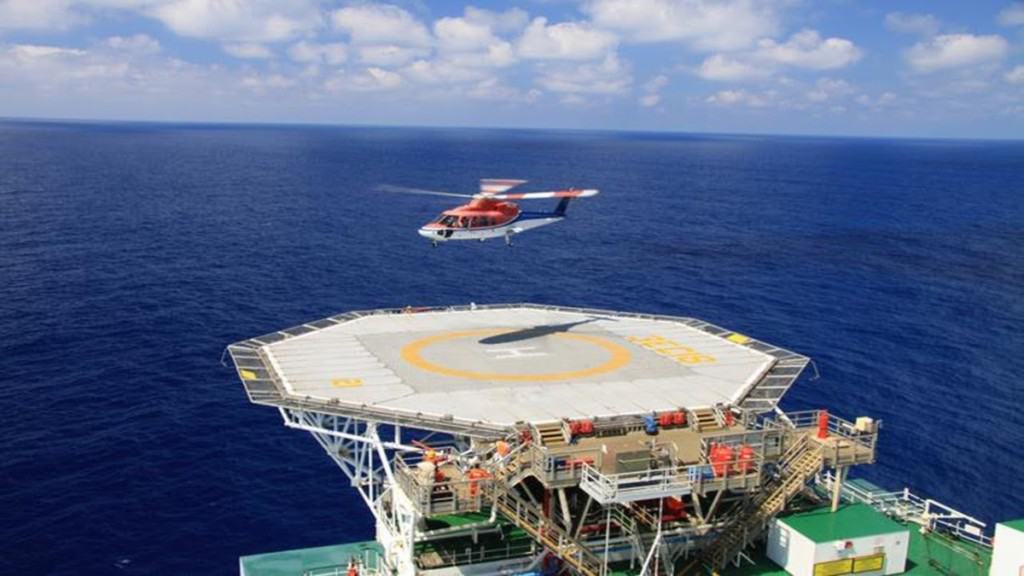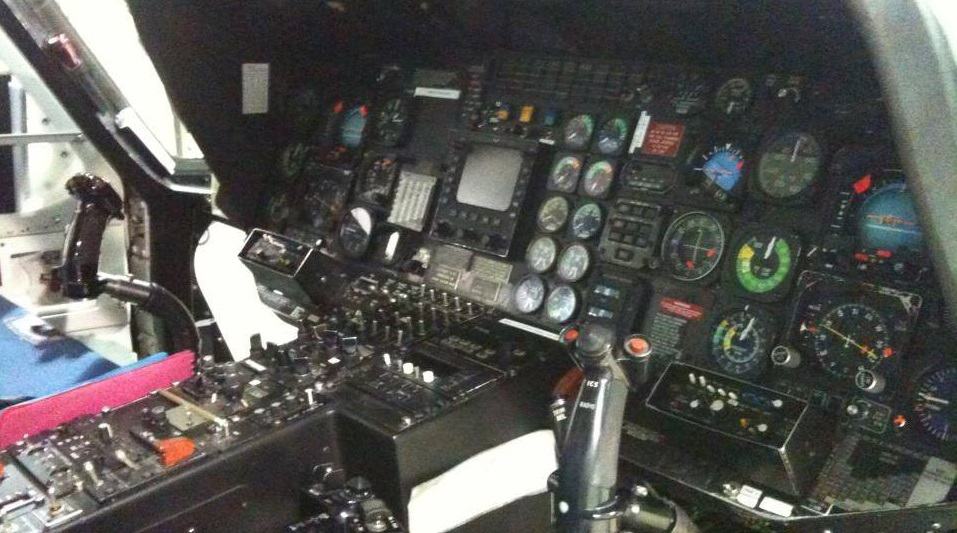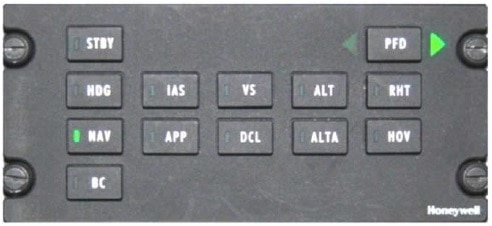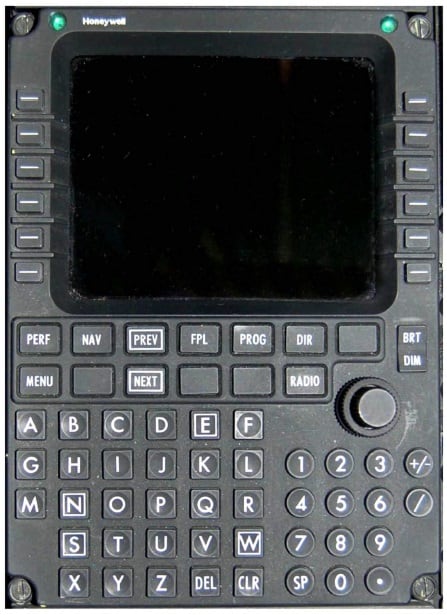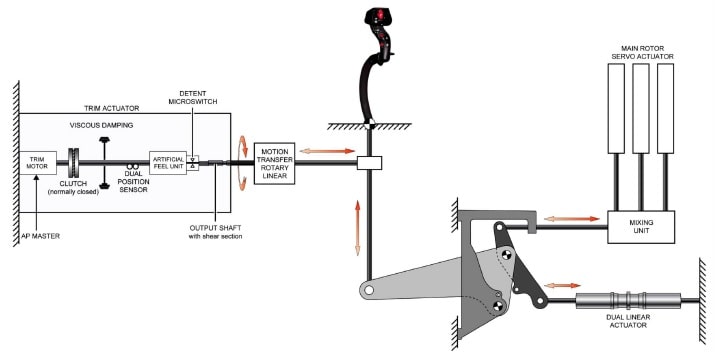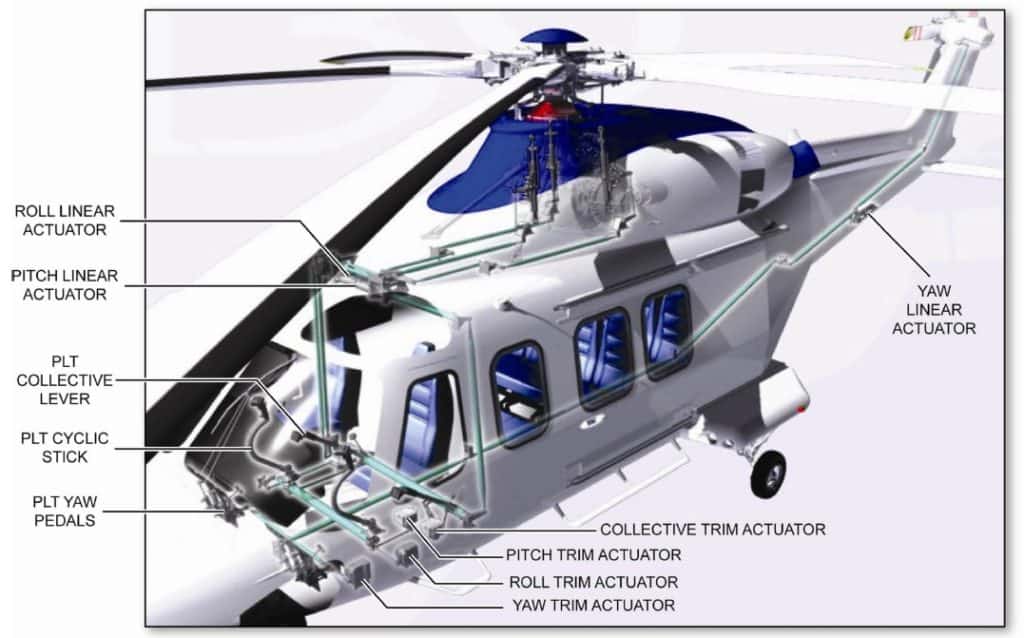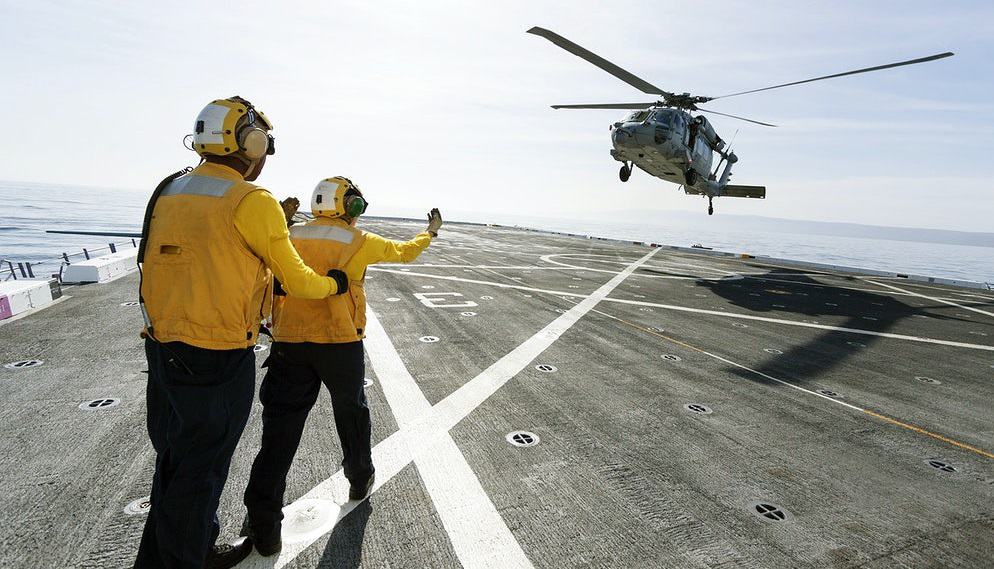
There is no doubt that a helicopter is a loud machine. MedEvac, police, news, and military helicopters seem to always be in the sky around us, and even inside our homes we can still hear them, but why are they so loud? Surely there must be ways for the manufacturers to reduce their noise!?
The loudest noise on a helicopter is produced by aerodynamic vortices created by each main rotor blade as it rotates through the air. When the following blade hits those vortices’ it creates a loud slap or snap sound. The tail rotor & engines also add to the noise signature of each helicopter.
All around the world, there is ongoing research to make the latest generation of helicopters quieter but in the meantime what is it that creates so much noise in these machines?
What Makes Helicopters So Loud?
There are three main areas on a helicopter that create noise and depending on where you are in relation to the helicopter will depend on which part you hear the loudest:
- Stood Close By – The engine will be the noisiest part of the helicopter
- Helicopter Approaching Overhead – The main rotor will be the noisiest part of the helicopter
- Helicopter Overhead – The main & tail rotors will be the noisiest parts of the helicopter
- Helicopter Passed Overhead – The engine will be the noisiest part of the helicopter
Source: Airbus Helicopters
To understand how each area creates the noise lets break each area down:
How Do Helicopter Main Rotors Make Noise?
“Almost everything you hear from a helicopter is aerodynamic noise. Reduced pressure on the top of the main rotor blade draws air upwards producing a vortex. The blade tip vortex is then directed downwards. When other rotor blades subsequently come into contact with these vortices, the ‘chopping’ or throbbing noise that is characteristic of helicopters is produced.” –
Karen Mulleners, DLR Institute of Aerodynamics and Flow Technology
The DLR Institute of Aerodynamics and Flow Technology has been doing some incredible research in collaboration with many agencies, manufacturers, and universities around the world in noise reduction in helicopters.
Some of their research has really helped to pave the way for designers to create helicopter parts that dramatically reduce the noise they produce.
As noted, the main noise producer on a helicopter is the main rotor. We have all heard the deep thumping sounds of the Bell Huey or Boeing Chinook well before we see them, but what is that sound created by exactly?
As a rotor blade passes through the air is spills vortices off the back and tip of it. Each rotor blade creates two areas of sound:
Blade Vortices:
The vortices created off the back of each main rotor blade produce an aerodynamic condition called BVI – Blade Vortex Interaction. As the vortices leave the trailing edge of the main rotor blade they get hit by the next rotor blade coming round. When the next blade hits each vortex it creates a snap or slap sound.
Because vortices are created down the length of the blade there is a wall of vortices in the path of the next blade. Each vortex that gets hit creates a sound. The culmination of this sound increases its volume.
The fewer main rotor blades there are on a helicopter, the larger each blade has to be to create enough lift to enable the helicopter to fly. These larger blades create larger vortices behind each blade, therefore as each vortex is intercepted by the next blade the louder, and deeper the slap.
This is the reason why the large blades on Huey’s (with only two blades) and Chinooks (with only 3 blades per rotorhead) create such deep sound that travels for miles.
Blade Tip Vortices:
Blade tip vortices are just what they sound like. They are the vortices that are created around the very tips of each main rotor blade. These can be easily seen on a helicopter as it flies in humid air:
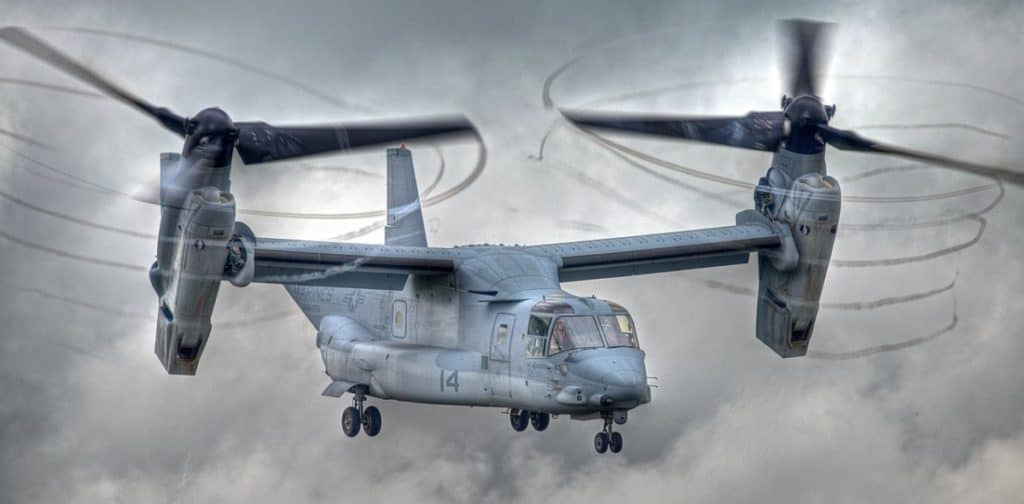
These tip vortices create many problems for helicopter designers but the two main sound-producing problems occur when:
1. The tip vortices are intercepted by another main rotor blade, like the BVI mentioned above, and when they interact with the tail rotor.
Below shows a digital simulation of how the tip vortices interact around the helicopter:
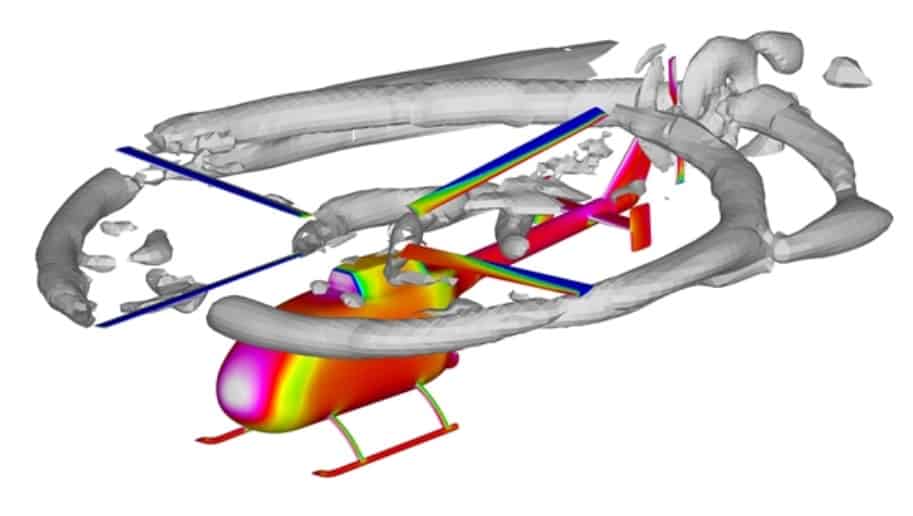
2. When the helicopter has long main rotor blades, a main rotor system that rotates fast, or has a high cruise speed, the blade tips can begin to reach the speed of sound on the advancing side of the helicopter. As the advancing blade tip reaches the sound barrier it creates a loud snap, amongst many other aerodynamic problems!
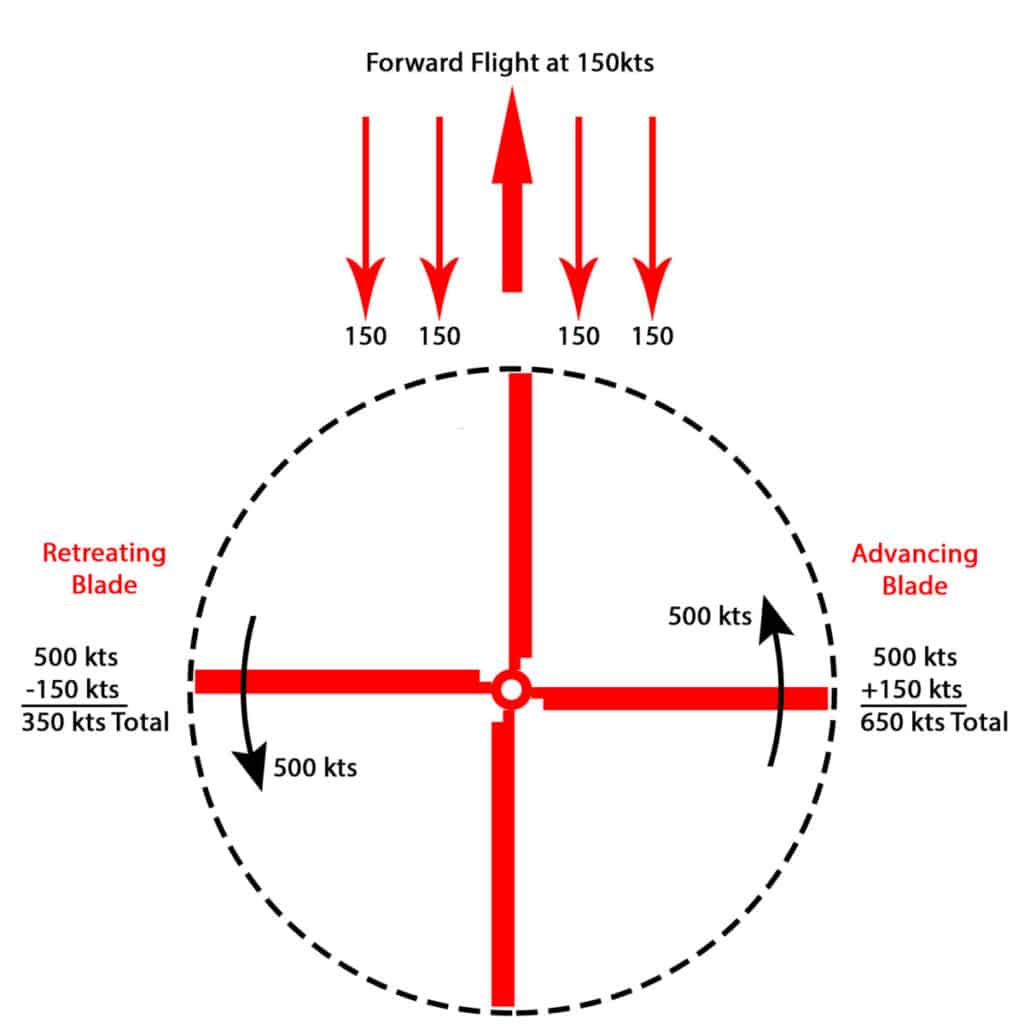
This loud snap is another noise-producing area helicopter designers face in preventing. It is not as common as BVI because designers purposely try and avoid the blade tips reaching this speed because of the high loss of lift it creates when it reaches the sound barrier, but as helicopters are designed to go faster and faster, this problem becomes more applicable.

Join My Newsletter & Get Great Tips, Information and Experiences To Help You Become a Superb Pilot!
How Do Helicopter Tail Rotors Make Noise?
Tail rotors create noise just like the main rotor with each blade leaving vortices and the next blade impacting them. This tail rotor BVI creates noise but at a higher frequency because of the higher rotational speed and smaller length of each tail rotor blade.
The tail rotor is also subjected to disruption from the main rotor vortices as they descend backward and downwards from the main rotor. The vortex simulation model above show’s how the main rotor vortices flow into the path of the tail rotor blades which causes them to have secondary BVI on each tail rotor blade, causing noise.
To help combat this noise there have been several very unique designs to helicopters over the decades that all aim to increase tail rotor performance and cut noise levels. These are the most noticeable designs:
Airbus/Eurocopter Fenestron:
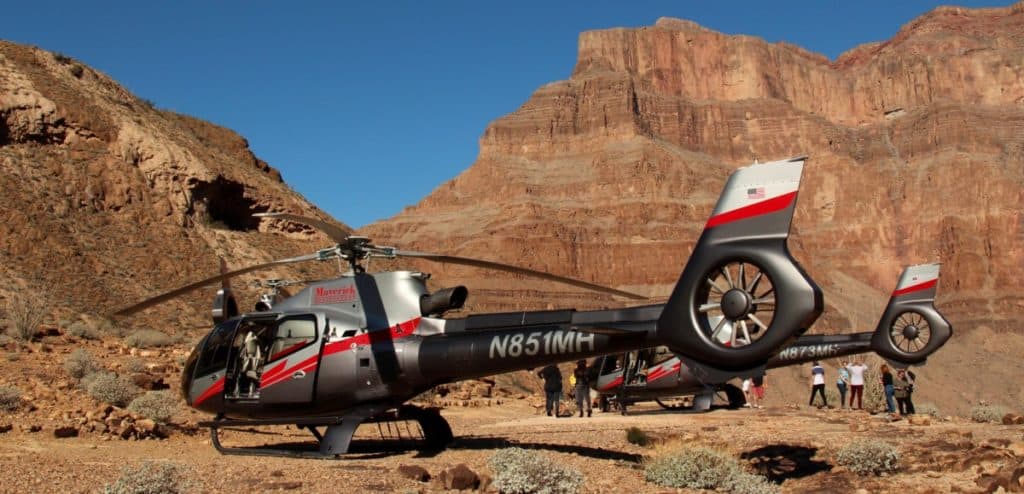
The Fenestron is a trademarked Anti-Torque system used on many Eurocopter, now Airbus Helicopters.
This anti-torque system works by placing a multi-bladed fan type of tail rotor system within a duct in the tail of the helicopter. The duct is integrated into the tail boom and is usually made of a fiberglass skin.
The fan unit is made up of between 8-18 blades, depending on the aircraft model, and is of a much smaller diameter than a conventional tail rotor system.
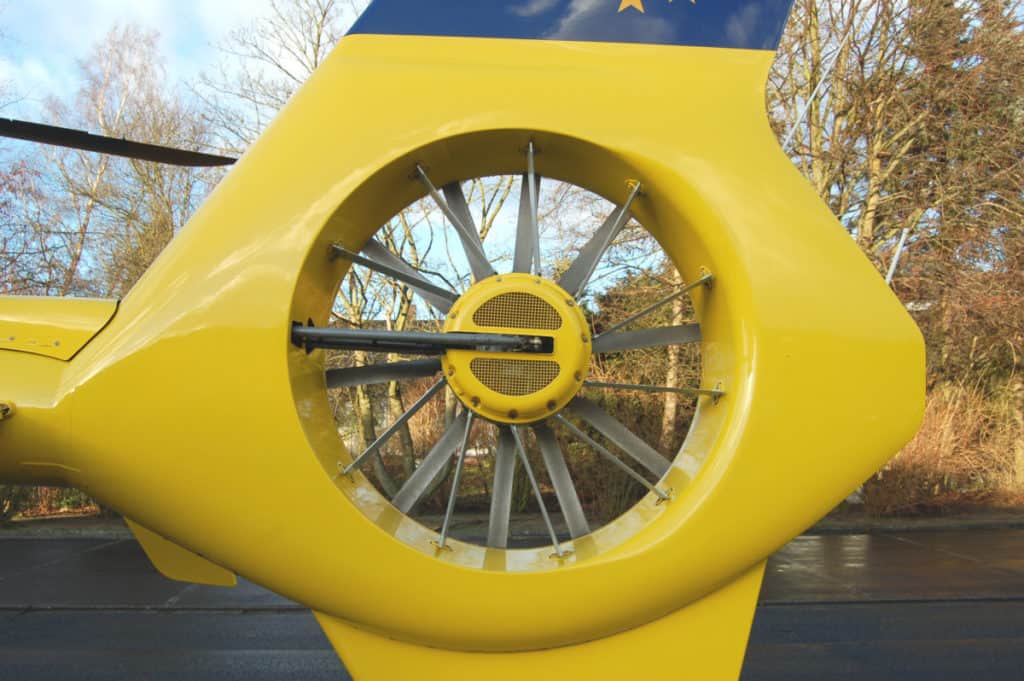
The Fenestron design allows for several improvements over a regular tail rotor by:
- Creating smaller tip vortices on the ends of the fan blades to reduce the amount and size of each vortex, resulting in quieter snaps as vortices are intercepted by the next fan blade
- Having more blades, the length and width of each fan blade can be reduced thus creating smaller vortices for the following blade to interact with
- The shrouded design helps to channel the main rotor vortices away from the Fenestron fan resulting in fewer vortices being hit by the Fenestron fan and creating noise
MD Helicopters NOTAR
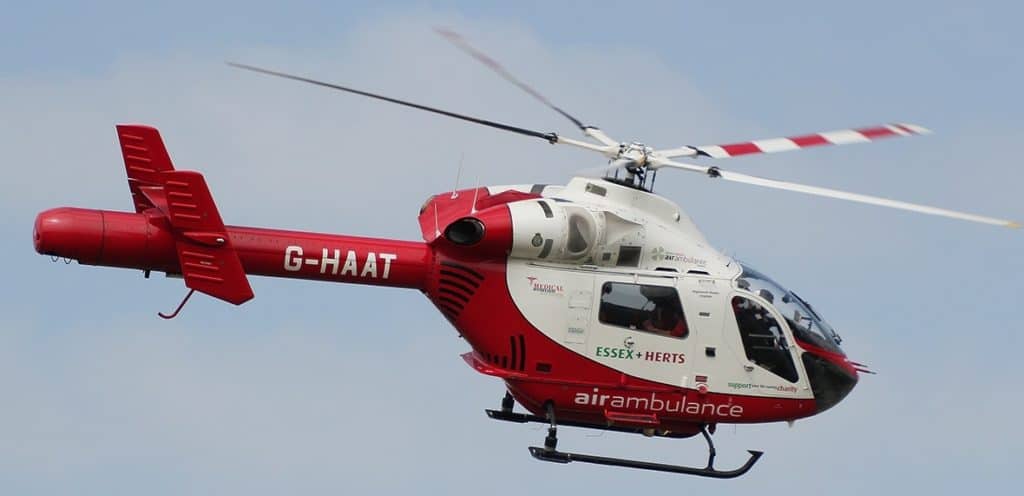
The patented NOTAR (NoTailRotor) system from MD helicopters does away with the conventional tail rotor altogether.
The NOTAR system comprises of an engine-driven, variable pitch fan that is mounted perpendicular inside the tail boom to produce large volumes of low-pressure air that exit through horizontal slots along the right-hand side of the tail boom and via a rotatable ‘Jet Thruster’ at the end of the tail boom.
As power is increased when the collective is raised, the pitch on the fan blades is increased to produce more airflow to counteract the increased torque.
- Air Intake for Fan
- Variable Pitch Fan
- Tail boom with Horizontal Coanda Slots
- Vertical Stabilizers
- Direct Jet Thruster
- Main Rotor Downwash Path
- Cross-Section of Tail boom
- Anti-Torque Thrust
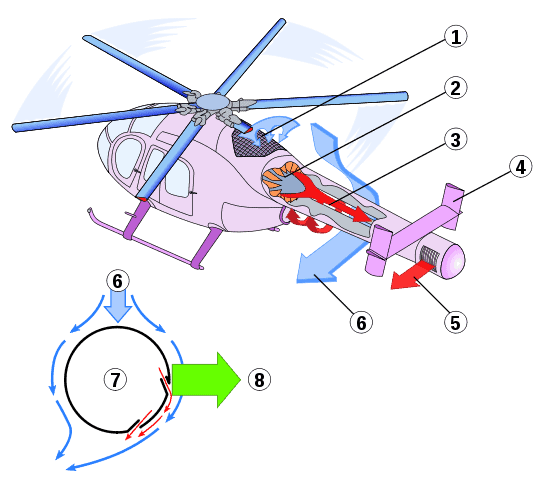
This system uses utilizes the Coanda effect to create an anti-torque to maintain yaw control of the helicopter. This system is very similar to the Airbus Fenestron as it uses a multi-bladed fan for creating airflow, the added benefits to this design are that the fan is installed inside the tail boom allowing it to stay completely isolated from any main rotor vortex interaction and helps to muffle or reduce the noise generated by the fan BVI.
Bell Helicopter EDAT
The EDAT or Electrically Distributed Anti-Torque system is the latest design development from Bell Helicopter.
The 4 fan unit uses independently controlled motors that adjust their speed to control the thrust they produce. Supplied by two transmission-driven electrical generators, the motors adjust the speed of each 4 bladed-propeller to match the anti-torque required by the helicopter.
This EDAT system helps to reduce noise in the following ways:
- 4 small blades on each motor create small vortices for the next blade to interact with
- Constantly changing speed changes the size of each blade vortex, thus reducing is the volume of snap when intersected
- Minimal propeller rotation at low anti-torque requirements creates fewer vortices produced
- Shrouded fan casing helps to divert main rotor vortices away from the 4 propellers
How Do Helicopter Engines Make Noise?
There are two types of engines used in helicopters. The piston engine, used in smaller helicopters up to around 4-5 seats, and then the Turboshaft Gas Turbine engines which are used in all sizes of helicopters.
The piston engines generally do not produce much noise pollution. With attached mufflers, they are not much different to an older car when stood next to a running helicopter.
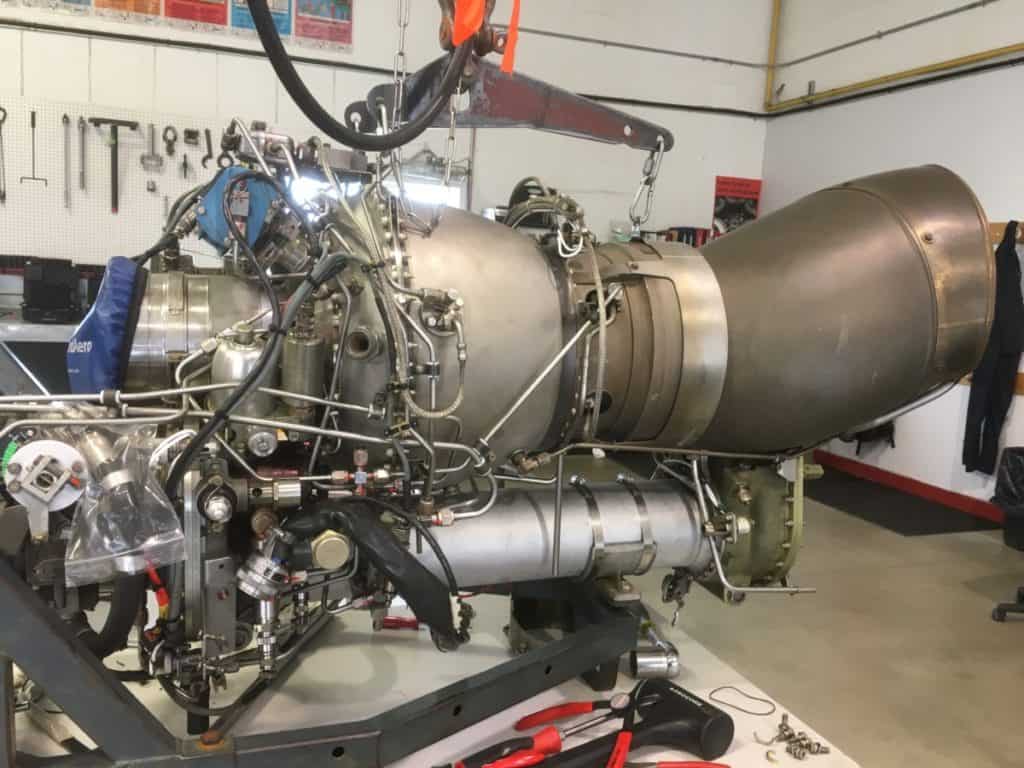
The gas turbine engines are a whole different animal. When a helicopter is running and about to lift off, the noise levels can be well over 100db which can really do damage to a person’s hearing, even for a short period, let alone a pilot with decades sitting inside of one!
Because of this, when I fly I wear:
- A pair of custom-molded earplugs from Westone (AviationSurvival.com Link)
- My Evo Helmet (AviationSurvival.com Link), or
- My Bose Headset with Active Noise Reduction (Amazon.com Link).
The high-frequency noise and decibel levels created by gas turbine engines really do warrant hearing protection.
Helicopter engines produce the majority of their noise in three main areas:
- The Air Intake
- The Power Turbine
- The Exhaust
Air is drawn into the front of the engine by a compressor or series of compressors. The volume of air required by even the smallest gas turbine engine is phenomenal and the noise of the air going in, coupled with the noise of the compressor squeezing the air results in very high-frequency sound levels.
As air exits a helicopter engine it is passed through the Power Turbine. This draws the energy out of the passing airflow to turn the main transmission. These power turbines rotate at insane RPM. The power turbine in the AS350 B2 Astar that I fly turns at over 51,000 rpm at full power!
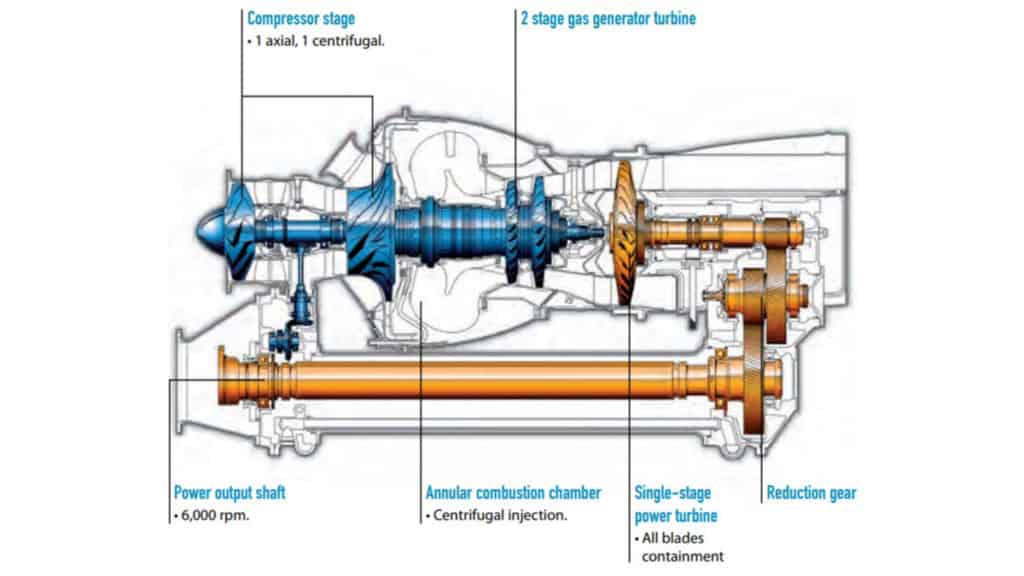
This is a major producer of high frequency noise from the engine!
The last noise-producing area is the gas exiting the exhaust system. The exhaust on a helicopter engine is larger and creates a lower tone in its noise pollution, but because of the huge quantities of gas exiting, it does create large amounts of noise.
Due to the nature and speeds of how the gas turbine engine operates designers are really at the end of the envelope of noise reduction. It is going to take the next leap in powerplant technology to reduce the noise from a helicopter engine!
How are Helicopters Being Made Quieter?
As pressure for quieter helicopters is coming from all angles the job of the designers to produce quieter machines is right up at the top of the specification list!
The quieter a helicopter can be made, the more markets it will appeal to leading to better sales. Here are just some of the ways in which helicopters have been designed to reduce their noise footprint:
More Blades
More main and tail rotor blades mean the blades can be smaller. Smaller blades produce smaller vortices that make less noise when intercepted by the next blade.
Shorter blades mean the tips travel slowly further reducing the blade tip vortices.
Slower Main Rotor RPM
Over the decades engineers have dabbled with slowing down the main rotor to reduce the size and amount of vortices being produced along the blade and especially at the blade tip.
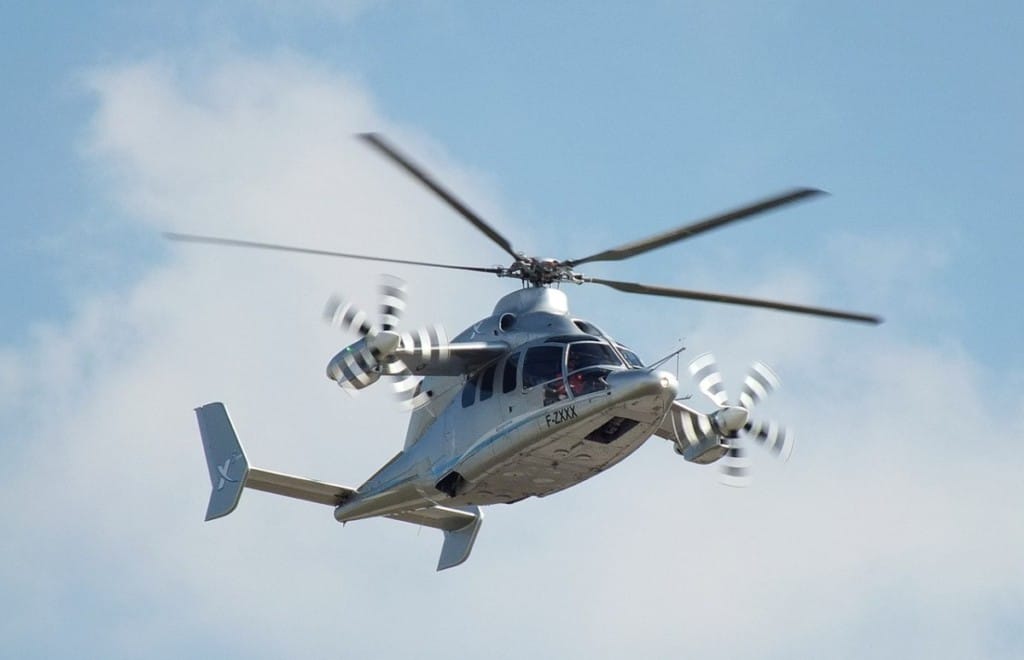
The current development of hybrid/compound helicopters like the Airbus/Eurocopter X3 have been testing the slowing of main rotor rpm when at higher cruise speeds to prevent the main rotor tips from breaking the sound barrier.
As of yet, there is no helicopter in production that has a varying-speed main rotor. Varying the speed is a complex area that changes many aerodynamic and vibration conditions, but as technology and design evolve, this may be a feature we see in future helicopter designs.
Active Rotor Blades
An area that is getting some current testing and development is called ‘Active Rotor Blades’. One of the pioneers leading the way in this field is the DLR Institute of Aerodynamics and Flow Technology in Germany.
The design uses multiple swashplates to control the pitch of each individual rotor blade during its rotation around the helicopter.
In a conventional helicopter, there is only one swashplate and the rotor blades are controlled as a group, but by using a multi-swashplate system the engineers have been able to independently control each rotor blade leading to a noise reduction by 30% over the flight envelope.
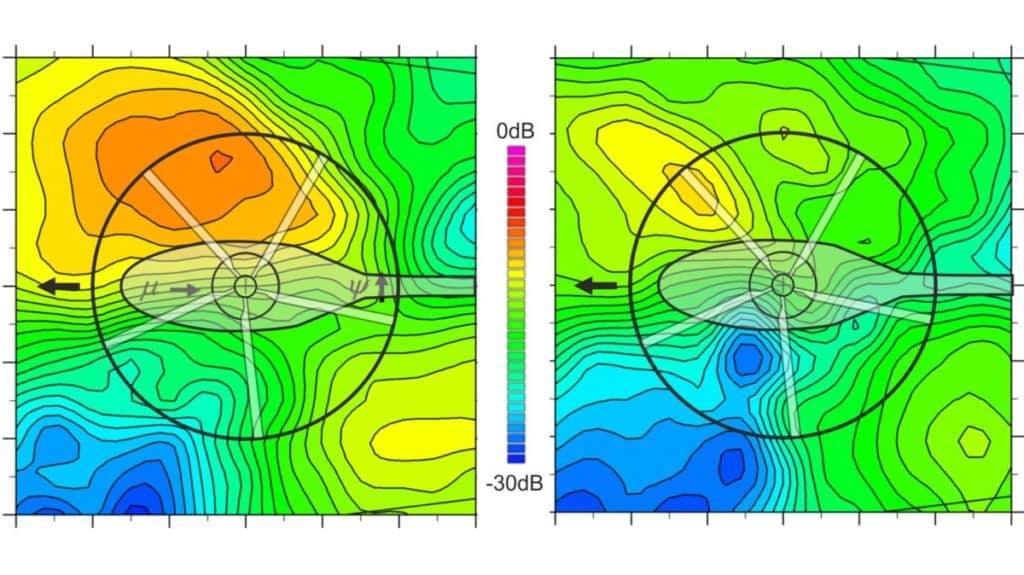
This system is still in the development phase but it would not surprise me to see this or a derivative coming into production over the next few decades.
Blade Tip Design
You may have seen this already if you have a keen eye when wandering around airshows etc. Blade tip design has created some funky looking main rotor blades over the last few decades all with the aim of decreasing rotor tip vortices and their associated aerodynamic problems.
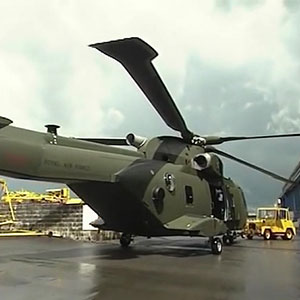
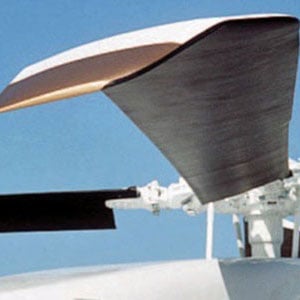
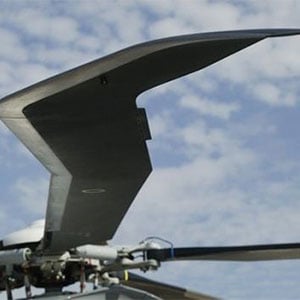
One of the major problems created by the tips of main rotor blades is called ‘Compressibility’ and it leads to increased noise, drag, vibration, power reduction, and blade twisting. By altering the shape of the blade tip engineers have been able to reduce the effect of compressibility to allow the blades to work more efficiently and produce less noise.
If you wish to learn more about blade compressibility you can find a great article written by Phil Croucher Here at HelicoptersMagazine.com
Tail Rotor Design
As mentioned above in the tail rotor section, helicopter manufacturers are constantly looking to improve the design of the anti-torque system on their helicopters.
Whether it be a ducted fan, electric motor, or no tail rotor system at all this area of helicopter design will always lead to some interesting innovations.
Flight Profiles & Procedures
One of the simplest ways to reduce helicopter noise is to alter how it is being flown. Certain flight maneuvers cause the noise produced by the main rotor to be extremely loud and this is actually one of the main reasons for noise complaints when flying over populated areas.
The noise created by Blade Vortex Interactions are really prominent during approaches to land so by adjusting the approach to have a steeper angle this can dramatically reduce a helicopter’s noise footprint. This is just one example.
Yet another testing program from the DLR Institute of Aerodynamics and Flow Technology in Germany has led to recommendations for helicopter manufacturers and operators to adopt:
Lower rotor noise thanks to a modified approach path – DLR on the way to the silent helicopter
To Finish
Helicopters are noisy machines and there is no getting away from that for the near future. Whether it is the noise created by the blade vortex interactions, blade tip compressibility, main rotor vortex interaction on the tail rotor, or the power turbine within the engine, the noise is there.
But by trying to reduce the noise bit by bit on every component an overall noise reduction of the helicopter is welcomed news to those who live under active helicopter flying areas!
Further Reading
If you would like more information on articles related to helicopters, please take a read of the ones listed here:


